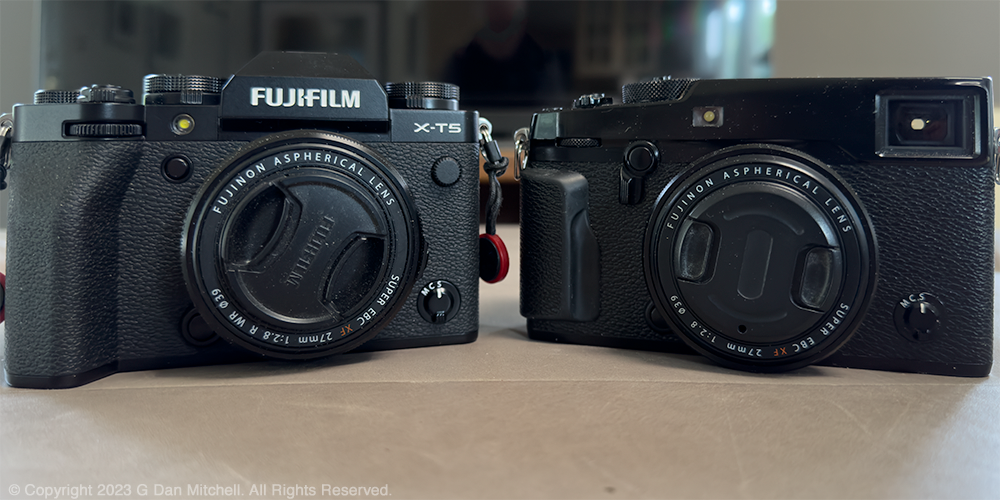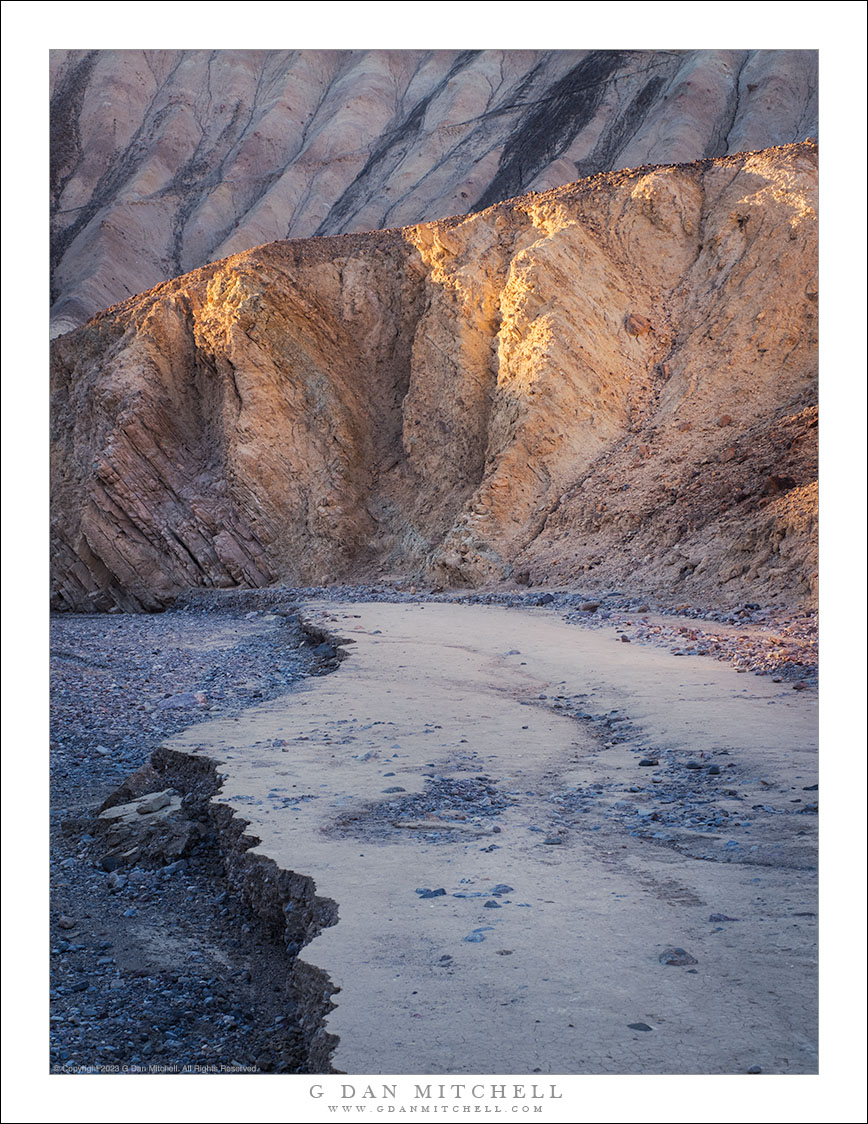I often try to help folks figure out the best answers to their photography questions — about gear, technique, locations, and so on. It has been a while since I’ve replied to one here at the blog, but I thought this was an interesting question. That answer could be useful to people with the exact same question, but also to anyone trying to parse out the difference between equipment options.
Joris writes:
Hi Dan,
As you’ve been shooting with multiple systems curious for your advice.
Currently I own a XT2 + 16-80 + 55-200, mostly being used for landscape, travel photography and some occasional wildlife. In general I’m quite happy with the system (especially controls, handling and colors) but the 16-80 is just a mess, with pictures too soft for landscapes.
As a solution I’m considering upgrading to either XT5 + 16-55 or a A7RIII + 24-105. Price of these solutions would be the same and that’s what gets me thinking. For the same money I get a full frame system, with better dynamic range and potentially better detail resolution because the lower pixel density. 40mp on APSC is just a lot… However the telezooms of Sony scare me off quite a bit, with the Sigma 100-400 being over 1kg, leaving the Tamron 70-300 as the only light solution.
What would you advise? Do you feel the upgrade to full frame would be worth it?
Best regards
Joris
Let me start by noting that both Fujifilm and Sony make very good equipment. Their design philosophies are not exactly the same, but that more a matter of preference than of better/worse. And unless your photographic needs are somewhat unusual, the odds are that both will produce fine photographic quality. I also have to note that while I have a lot of experience with the Fujifilm brand — including the 16-55mm lens you mention — I do not have any direct personal experience with Sony. On the other hand, I know quite a few fellow photographers who do use Sony full-frame systems and are very happy with them.
You mention better dynamic range and the potential for additional detail from the larger full-frame sensor and its larger pixel dimensions. In fact, when all else is equal (though it never is!) a larger sensor of a given generation of sensor technology can provide more dynamic range and higher sensor resolution than a smaller sensor. In some cases, that can be enough to call for the larger system… but this should not be an automatic, default conclusion for every photographer.
If you are already producing quite large prints on a regular basis (and doing all the things to optimize their potential quality — using a tripod and remote release, being extremely careful with aperture selection, using the best lenses, and so forth) and you are encountering the limits of your camera in visible ways then the larger system can make sense. In my experience using a 24MP Fujifilm APS-C system, I am completely confident that I can produce top-quality 24′ x 36″ prints from my image files. If you are not printing, or if you don’t generally print that large, you are not likely to see any real world improvement from moving to the larger sensor.
There’s a similar issue at work with the potential larger dynamic range. The larger sensor like does have more dynamic range, but it isn’t as simple as “sensor 1 works and sensor 2 won’t.” I like to think of three kinds of image situations relative to dynamic range — to simplify a bit.
- The subject’s dynamic range is not too wide for either camera — This is by far the most likely scenario, one in which neither camera has a meaningful advantage.
- The subject’s dynamic range exceeds that of both cameras — This is probably the next most likely scenario. Imagine a scene that includes the disk of the sun and some foreground subjects in shade. No camera can properly render that extremely wide range. Other techniques will need to be employed with either camera: exposure blending, sacrificing highlights or shadows, GND filters, fill flash, etc.
- The subject’s dynamic range exceeds that of one camera but not the other — Surprisingly, this is the least likely scenario, at least when we compare very good contemporary cameras. It requires the scene to exceed the range of the less capable camera by only a very small amount — not enough to exceed the range of the other camera.
So, the bottom line regarding dynamic range is that it is likely that the full frame camera has more… but the situations in which this margin will make a meaningful difference tend to be somewhat rare.
Now, if all of the other aspects of the two cameras were identical (price, size, lens quality and availability, camera interface, etc.) the answer would be pretty straightforward — go ahead and get the camera with a bit more potential resolution and dynamic range.
But all other aspects are not the same, are they? And this is where things become a bit more complicated and subjective… and can frustrate photographers looking for the Very Best Thing as determined in some logical, objective way.
In fact, you have already brought up a few of these issues in your message to me: you are less than pleased with the 16-80mm Fujifilm lens and you have concerns about the size and weight of the larger zooms for the full frame camera.
I can’t tell you which way to go here, but perhaps I can help you clarify your own thinking.
If you like the Fujifilm “ethic” and design — the relatively small cameras, the plethora of manual controls, and so forth, perhaps moving to that XT5 (which sounds like an excellent camera) and updating your lenses might get you closer to what you want. The 16-55mm lens is excellent and in a different category than the two lenses you have. (Although it can work well in many cases, I might consider upgrading that 55-200mm lens, too, if that’s something on the table.)
If you like the feel of the Sony cameras and feel up to switching from one brand to another — not a decision to be taken lightly — then that is also a fine option. If I’m correct, the 24-105mm lens you mention has a smaller maximum aperture than the 16-55 from Fujifilm, but it also has a larger focal length range.
In summary, I can’t say that either option is generically better than the other — which is often the case with these kinds of choices! — but if you think it through from a function perspective (rather than the “better specs” perspective), I think that an answer may become clearer.
Good luck, and I hope you are happy with whichever option you choose!
G Dan Mitchell is a California photographer and visual opportunist. His book, “California’s Fall Color: A Photographer’s Guide to Autumn in the Sierra” is available from Heyday Books, Amazon, and directly from G Dan Mitchell.
Blog | About | Twitter | Flickr | Facebook | Email
Links to Articles, Sales and Licensing, my Sierra Nevada Fall Color book, Contact Information.
Scroll down to leave a comment or question. (Click this post’s title first if you are viewing on the home page.)
All media © Copyright G Dan Mitchell and others as indicated. Any use requires advance permission from G Dan Mitchell.


